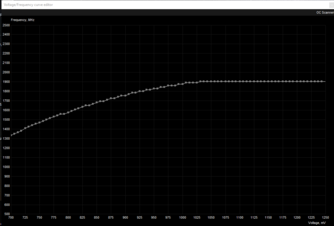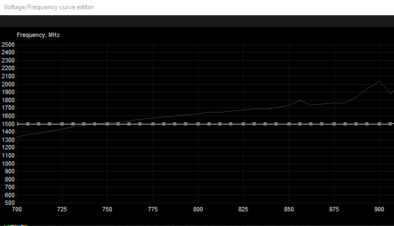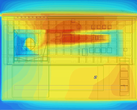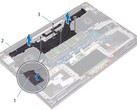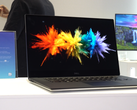Despite reports of Dell being a bit more proactive this time with respect to VRM cooling, there have been instances of the NVIDIA GTX 1650 GPU in the XPS 15 7590 throttling to a crawl. While we are yet to review this laptop in our labs (and you know we take the time to do a darn good job), a Redditor /u/Jr712 has managed to find a workaround to the problem. The solution? Something that XPS users have gotten used to by now — undervolting.
Jr712 used a combination of MSI Afterburner (for undervolting), MSI Kombustor (for stress testing), and GPU-Z (for voltage and frequency monitoring) for this exercise. At the stock voltage of 800 mV, the GPU attains a maximum clock of just 1,335 MHz and appeared to throttle within a minute of stress testing if the temperature hit the 75 °C mark. Undervolting the GTX 1650 in the XPS 15 7590 from 800 mV to 700 mV seems to have lowered the maximum operating temperature from 75 °C to around 68 °C while offering better sustained performance at near boost clock without throttling.
To go about this procedure, it is being suggested to optimize the voltage curve in Afterburner by increasing the frequency at the 700 mV point to 1,500 MHz. Subsequent frequency points at other voltages up to 900 mV can also be set at 1,500 MHz. There is no need to worry about voltages beyond 900 mV as the GPU itself is capped at a maximum voltage of 800 mV.
A stress test in Kombustor with artifact scanning on while simultaneously monitoring voltage and temperature in GPU-Z should confirm if the undervolting has worked — there should be no artifacts in Kombustor and GPU-Z voltage reading should remain at 700 mV with clocks hitting a stable 1,500 MHz. You may still have to workaround the frequencies a bit depending on your specific model.
In Jr712's case, the temperature hit a maximum of just 67 °C after undervolting even after stress testing for an hour with the clocks remaining stable at 1,500 MHz. Note that you may also need to undervolt the CPU as well along with the GPU for better overall results.
Are you an early adopter of the XPS 15 7590 and have felt the need to undervolt? Let us know in the comments below.





